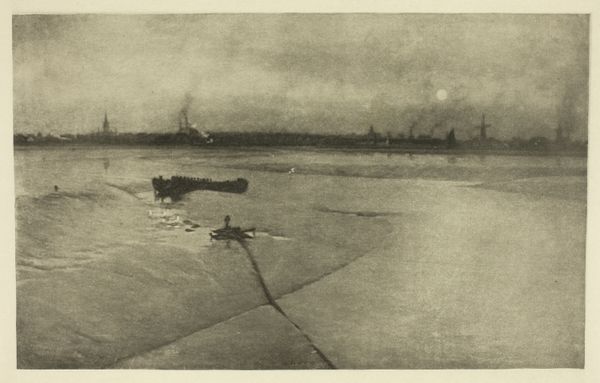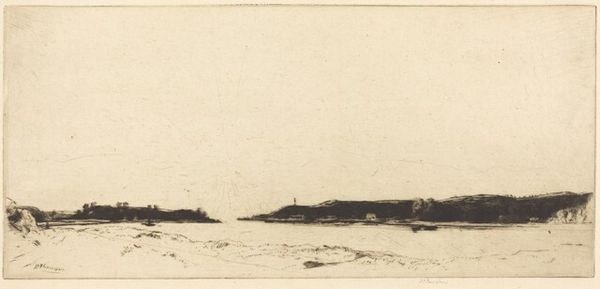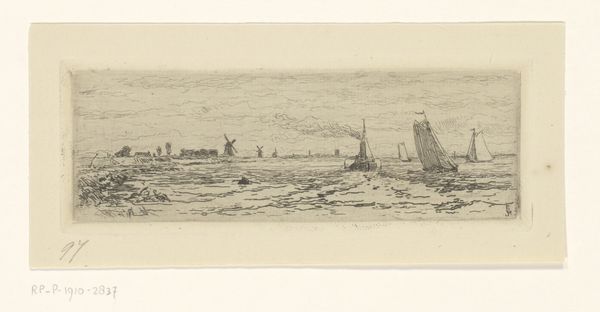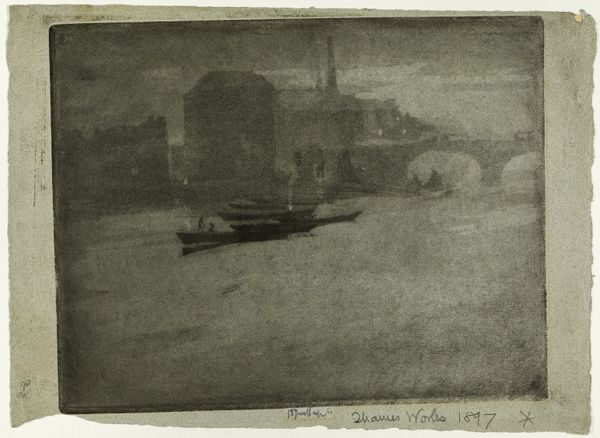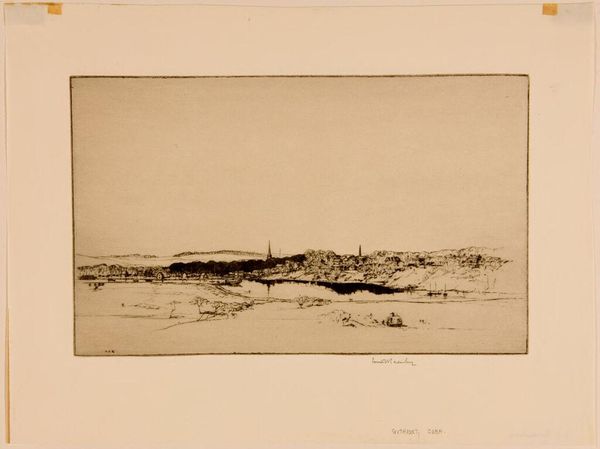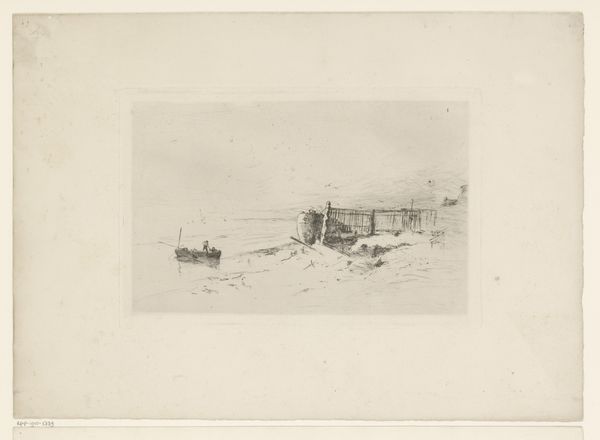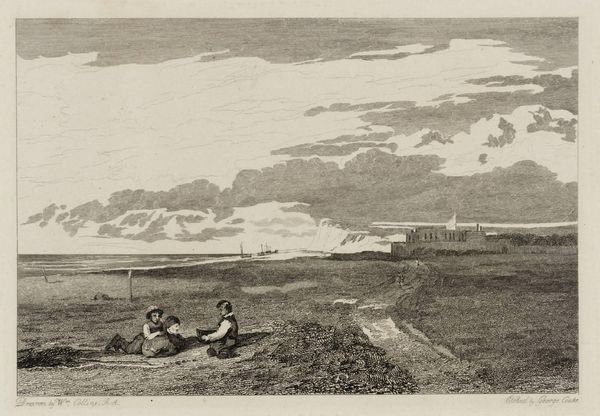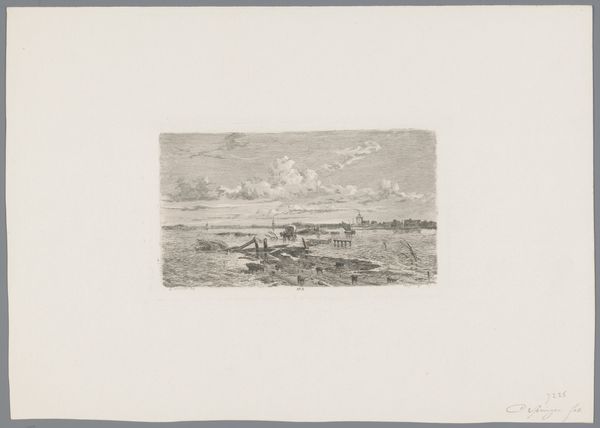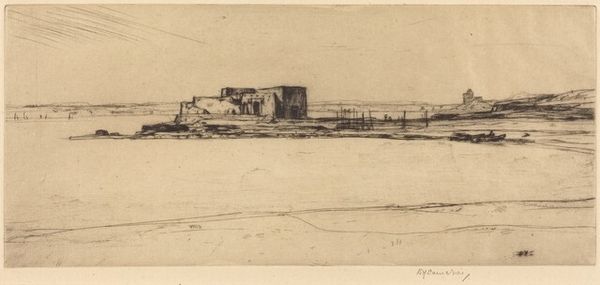
Dimensions: height 113 mm, width 188 mm, height 177 mm, width 266 mm
Copyright: Rijks Museum: Open Domain
Curator: This gelatin-silver print, entitled "Rivierlandschap met sneeuw" or "River Landscape with Snow," was captured by Peter Henry Emerson between 1890 and 1895. The work presents an ethereal riverscape, seemingly suspended in a moment of stillness. Editor: Stillness is an understatement. It feels…bleak. The tonality, the muted grays and whites, suggest an oppressive, almost desolate winter atmosphere. There's a distinct absence of color that amplifies the scene's melancholic character. Curator: Indeed. Notice how Emerson masterfully utilizes composition to underscore this emotional resonance. The horizon line is placed relatively high, minimizing the sky and emphasizing the flat, expansive river. This compresses the visual space, focusing our attention on the textured surface of the snow and water. It evokes a sense of entrapment within this frigid landscape. Editor: What interests me is the implied labour suggested within what appears like a frozen wasteland. Consider the boat and factories blurred into the horizon, indicating the operations happening on or near this snow-covered river; consider how raw materials and perhaps manufactured products were hauled along this river even through the harshest months of the year. Curator: I can see that. The formal qualities certainly hint at the narrative implications you propose, and Emerson was well-regarded for his social realism, which is so masterfully evoked in this composition. However, focusing solely on the subject matter risks overshadowing Emerson’s radical treatment of photography as a medium of art rather than pure documentation, something very akin to painting. Editor: Agreed, but isn’t his style indicative of a clear influence by the social climate and the artist’s concerns of the time? The labor question, if we’re being precise? This isn’t just art for art’s sake, this piece is entrenched in what it meant to occupy a space within society as a working individual during this period. It has social import precisely due to his formal techniques, and not despite them. Curator: A persuasive argument. Looking closer, I recognize how this “snapshot” offers insights into the socio-economic conditions as much as a contemplation of its aesthetic merits. Editor: Right. This approach also shifts the power to consider ordinary working peoples rather than prioritizing idyllic pastoral landscapes. We should never separate what we see from how it was actually made in tandem with its surrounding cultural and political landscape. Curator: Fair enough. Considering the landscape in this light reveals more to ponder about the moment and society from which this originates. Editor: Exactly, a perspective which will shape the audience's relationship to this photograph— hopefully leading them to reflect upon its profound nature in light of the work needed to traverse it.
Comments
No comments
Be the first to comment and join the conversation on the ultimate creative platform.
